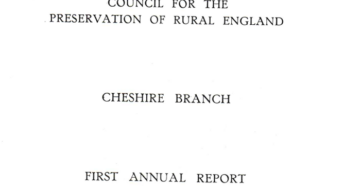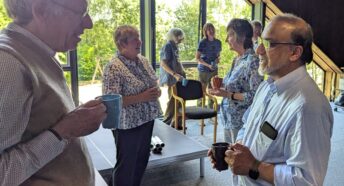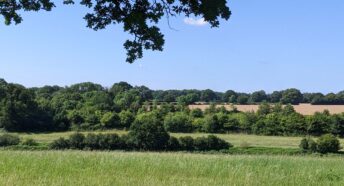CPRE Kent fights at inquiry to protect High Weald AONB countryside

An 18-day public planning inquiry opens today (Tuesday, September 21) into a scheme for 165 houses near Cranbrook in the High Weald AONB.
Berkeley Homes had been granted permission to build 36 homes at Turnden, in the Crane Valley between Cranbrook and Hartley, back in February 2019. The developer then expanded its scheme to add 165 more homes – which was also backed by the council.
This scheme represents substantial development in the AONB on a greenfield site that has not allocated for development within a Local Plan. CPRE Kent has been vocal in its objection to the scheme from the start.
CPRE Kent supported Natural England in objecting to the proposal and asking the Secretary of State for Housing, Communities and Local Government to call in the decision. This request was accepted and the inquiry opening today is to inform the Secretary of State’s decision.
CPRE Kent is undertaking a formal role at the inquiry, working alongside Natural England and the High Weald AONB Unit in presenting evidence against the scheme and challenging the evidence being presented in favour of the proposed development.
We do not undertake such formal action lightly though are deeply concerned the Turnden scheme would set a precedent that could lead to harm to protected areas throughout the country.
The outcome of this inquiry is not just critical to AONBs in Kent but to protected landscapes across the country.
For more on this story, click here
Tuesday, September 21, 2021
- A number of important documents have yet to emerge. For example, a rigorous transport plan and a finalised air-quality assessment. The latter is critical given that allocations at Teynham will feed extra traffic into AQMAs.
- There seems to be no coherent plan for infrastructure delivery – a key component of the plan given the allocations being proposed near the already crowded Junction 7.
- There seems to have been little or no cooperation with neighbouring boroughs or even parish councils within Swale itself.
The removal of a second consultation might have been understandable if this final version of the plan were similar to that being talked about at the beginning of the consultation process. It is, however, radically different in the following ways:
- There has been a major shift in the balance of housing allocations, away from the west of the borough over to the east, especially around the historic town of Faversham. This is a move that raises many concerns.
- A new large allocation, with accompanying A2 bypass, has appeared around Teynham and Lynsted, to which we are objecting.
- Housing allocations in the AONB around Neames Forstal that were judged “unsuitable” by the council’s own officers have now appeared as part of the housing numbers.
- Most of the housing allocations being proposed are on greenfield sites, many of them on Grade 1 agricultural land – a point to which we are strongly objecting.
Concerns about the rush to submit the plan
The haste with which the plan is being prepared is especially worrying given the concentration of housing in Faversham. If the town is to take a large amount of new housing, it is imperative that the policies concerning the area are carefully worked out to preserve, as far as possible, the unique nature of the town. The rush to submit the plan is likely to prove detrimental.
As Swale does not have a five-year land housing supply, it is open to speculative development proposals, many of which would run counter to the ideas contained in the current plan. Some are already appearing. This is a common situation, and one that, doubtless, is a reason behind Swale’s haste.
Our overriding fear, however, is that this emphasis on haste is ultimately going to prove counterproductive. This is because it is our view that the plan, in its current form, is unlikely to pass independent examination. We are urging Swale to listen to and act upon the comments being made about the plan and to return the plan to the council with appropriate modifications before submitting it to the Secretary of State.
Essentially, this means treating the current consultation not as the final one but as the ‘lost’ second consultation.
The consultation ends on Friday 30 April and we strongly urge residents to make their opinions known if they have not already done so.
Further information








